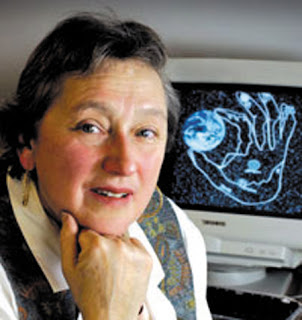The cell is the basic structural and functional unit of all known living organisms. It is the smallest unit that is classified as a living thing and is often called the building block of life. A typical cell consists of protoplasm, i.e., nucleus and cytoplasm. Organisms can be classified as unicellular which consist of a single cell which include most bacteria or multicellular which include plants and animals. The word cell comes from the Latin “cella”, meaning "small room". Cells emerged on planet Earth at least 4.0–4.3 billion years ago.
1. Who discovered cell?
Ans: Robert Hooke (1665).
2. The largest known cells are unfertilized ostrich egg cells which is 3.3 pound in size. The smallest known cell is of PPLO which is 0.1 – 0.3µm in size.
3. Name the branch of Biology which deals with the study of cell.
Ans: Cytology.
4. The Golgi complex is a cytoplasmic organelle which is found in Eukaryote cells as in animals, plants and fungi. The Golgi complex was discovered by Camillo Golgi in 1898.
Ans: Matthias Jakob Schleiden and Theodor Schwann (1839).
6. Mitochondria are the power house of the cell because in it stepwise oxidation of fuel occurs, which results in release of chemical energy. This energy is stored in the form of ATP.
7. Who discovered nucleic acids?
8. Full Form of DNA is Deoxyribo Nucleic Acid and the full form of RNA is Ribo Nucleic Acid.
9. Which is the kitchen of the cell?
Ans: Chloroplast.
10. DNA was discovered by James D Watson and Francis Crick in 1953. They won the Nobel Prize in Physiology or Medicine in 1962.
11. Name two types of subdivisions of cell.
Ans: Prokaryotic Cells and Eukaryotic Cells.
12. There are two kinds of Prokaryotes, namely bacteria and archaea. Plants, animals, fungi, slime moulds, protozoa and algae are all Eukaryotic.
13. Which is the smallest human cell?
Ans: Red Blood Cell.
14. The largest human cell is the female ovum. The longest cell is neuron.
Ans: Robert Brown.
16. Nucleus contains nucleoplasm, nucleolus and chromatin material. Chromatin is the controlling centre of cell as it contains chromosomes.
17. Name three type of Plastids.
Ans: Chloroplasts, leucoplasts and chromoplasts.
18. The red color of tomatoes is due to the presence of lycopene pigment, i.e., chromophore. The color of the carrot is due to carotene.
Ans: Lynn Margulis.
20. According to the Endosymbiotic theory mitochondria and plastids and possibly other organelles represent formerly free living bacteria that were taken inside another cell as an endosymbiont.





No comments:
Post a Comment
Thank You For Comment